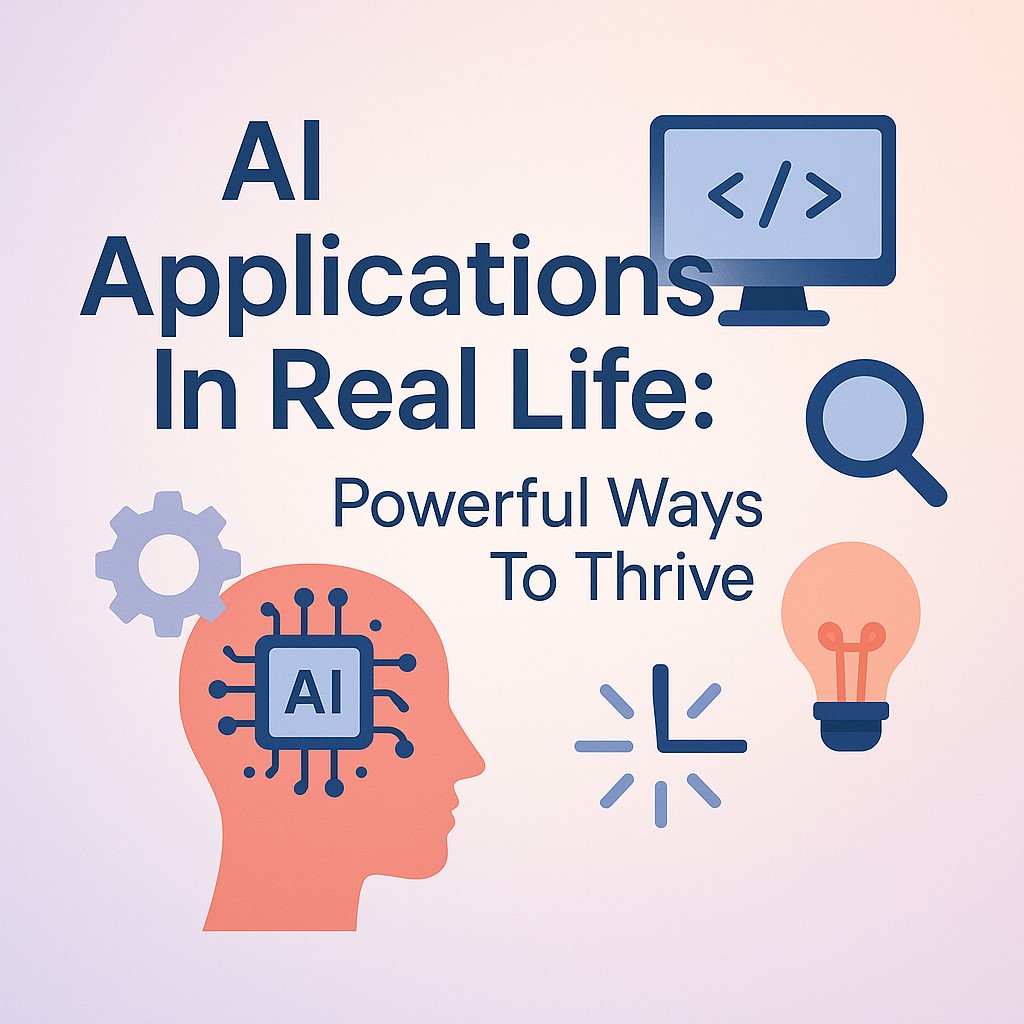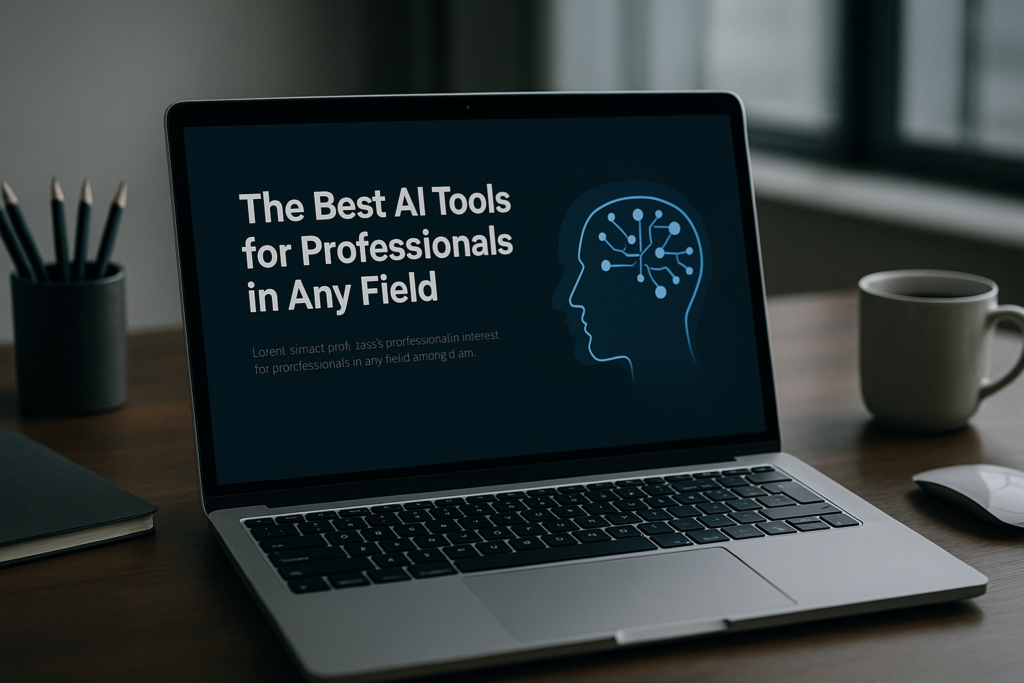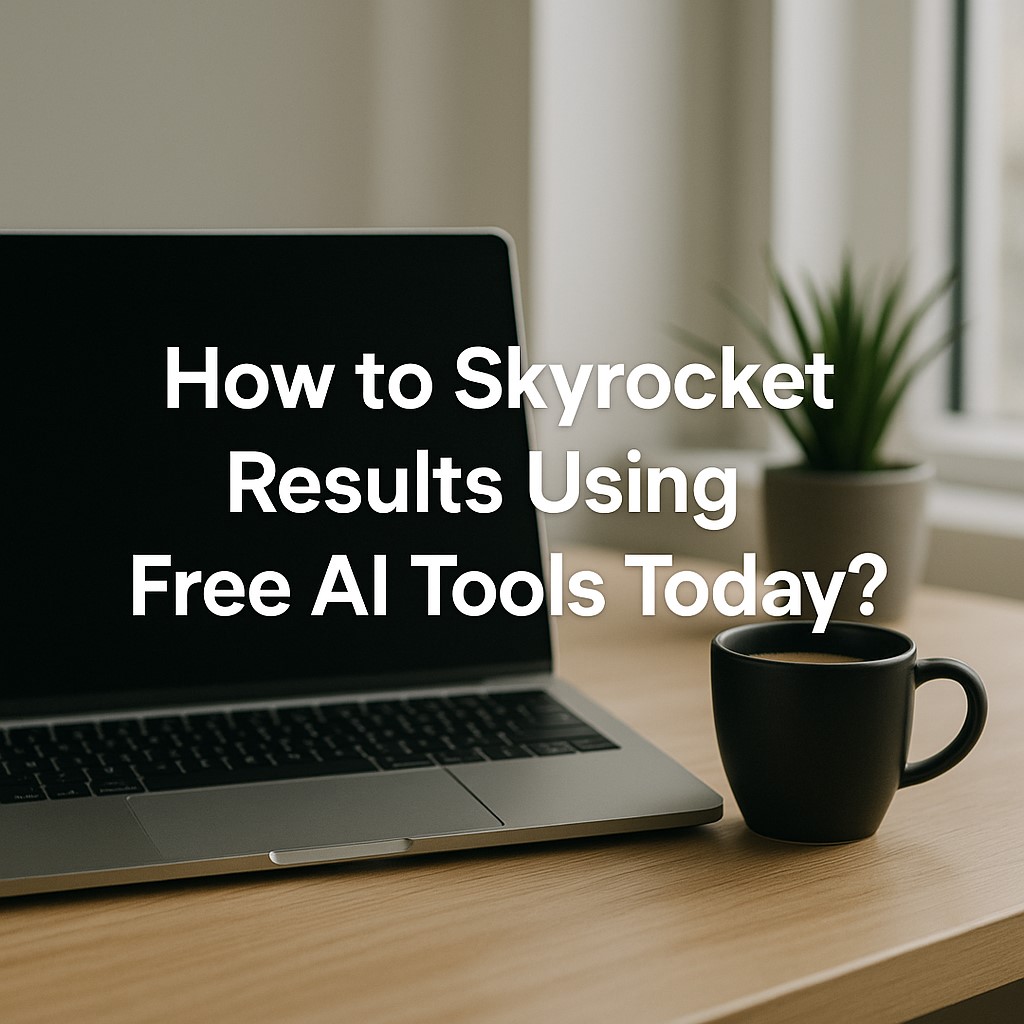Ever wonder how your apps know what you like? AI applications in real life make it happen—and they’re shaping your world more than you think.
AI is all around us—even if you don’t always see it. From unlocking your phone with your face to getting song suggestions on Spotify, it’s working behind the scenes. These are just a few examples of AI applications in real life.
So, what does that mean exactly? AI (or artificial intelligence) is when machines do things that usually need human thinking, like learning, planning, or problem-solving. And AI applications in real life are the ways this smart tech shows up in your everyday world.
You’ll find it in schools, homes, stores, and even your favorite apps. It helps people work faster, learn better, and live smarter. That’s why understanding AI applications in real life is so important, especially for students like you growing up in a tech-powered world.
Let’s explore how AI is not just science fiction anymore. It’s part of real life—and it’s only getting smarter.
Table of contents
- Everyday AI: AI applications in real life you already use
- Top 7 practical AI applications in real life today
- How AI applications in real life are changing industries?
- AI applications in real life are transforming healthcare fast
- Cool AI applications in real life for educational use
- AI applications in real life making business smarter
- Real-world AI projects showing AI applications in real life
- AI tools used by students: real-life applications that help
- AI applications in real life in smart home devices
- How do AI applications in real life improve transportation?
- AI applications in real life are shaping modern shopping
- How do AI applications in real life power customer service?
- FAQs: AI applications in real life
- Conclusion
Everyday AI: AI applications in real life you already use
The simple tools you use daily are smarter than you think. AI is everywhere—even if you don’t notice it. From the moment you unlock your phone to when you scroll through TikTok, AI works behind the scenes. These tools help make your life easier, faster, and more fun.
Voice assistants are your AI buddies
Think about Siri, Alexa, or Google Assistant. When you ask for the weather, play music, or set a timer, AI understands your voice and responds. These voice assistants are real examples of AI applications in real life. They learn how you speak and even improve the more you use them.
Smart filters on social media
When Instagram or Snapchat adds fun filters to your face, AI is doing the work. It detects your eyes, nose, and smile in real time. That’s not just coding magic—it’s an AI application in real life that’s trained to recognize faces and emotions. Pretty cool, right?
You also see AI when your feed shows videos or posts you like. Apps like TikTok and YouTube use machine learning to figure out your interests and recommend more stuff you enjoy.
Helpful tools you use every day
Ever typed something in Google and saw autocomplete suggestions? That’s AI predicting what you want to say. When Google Maps tells you the fastest route or when Grammarly fixes your typos, AI is behind it. These are all solid AI applications in real life that save time and reduce stress.
From chatting with bots to unlocking your phone with your face, you’re using AI daily, without even trying. It’s not just high-tech labs and robots. It’s already in your hands.
AI applications in real life are more common than you think. As tech grows, so will the smart tools you use every day.
Top 7 practical AI applications in real life today
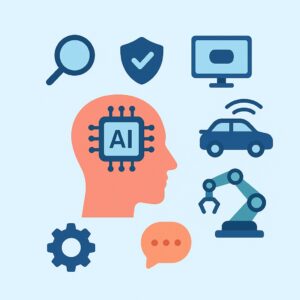
Smart tech is all around—here’s how it’s used. AI isn’t just about robots or science fiction anymore. Today, it helps with stuff you do every day—like sending messages, streaming music, or shopping online. Let’s look at some AI applications in real life that matter to you right now.
1. Smart recommendations on Netflix and Spotify
AI tracks what you like to watch or listen to. It then suggests shows or songs based on your taste. That’s why you always find your next binge or favorite playlist.
2. Autocorrect and predictive text
When you type on your phone or laptop, AI checks for spelling, grammar, and even predicts the next word. These AI applications in real life make typing easier and faster.
3. Face unlock on phones
Your phone camera uses AI to scan and recognize your face. It learns your features, even if you get a haircut or wear glasses. That’s real-time smart tech in your pocket.
4. Chatbots on websites
Ever talked to a pop-up assistant while shopping online? That’s an AI chatbot answering your questions 24/7. It saves time and helps with quick fixes—no waiting.
5. GPS and traffic updates
Apps like Google Maps use AI to find the best routes and give live traffic updates. These AI applications in real life help you reach places faster, avoiding jams and delays.
6. Social media filters and content
Snapchat and Instagram filters use AI to recognize your face and add effects. AI also powers your feed by showing you content based on what you like or follow.
7. Online shopping and ads
When Amazon shows “items you may like,” that’s AI. It learns from your searches and clicks. Even the ads you see are chosen based on your behavior.
These AI applications in real life are already shaping how you live, learn, and connect. As AI grows, these tools will only get smarter and more helpful.
How AI applications in real life are changing industries?
From farms to fashion—AI is transforming the way work gets done. AI isn’t just for tech labs anymore. It’s now helping real industries do things faster, better, and smarter. From farming to fashion, AI applications in real life are changing how businesses run every day.
Agriculture
Farmers now use AI-powered tools to check soil health, predict weather, and even spot sick crops. Drones and sensors collect data, and AI helps farmers make smart choices. These AI applications in real life improve crop quality and save time in the fields.
Fashion and retail
Ever see a “recommended size” when shopping online? That’s AI. Fashion brands use it to track trends, manage stock, and personalize your shopping experience. AI can also help design new styles based on what’s trending.
Factories
Robots on factory floors can now spot errors, fix them fast, and work non-stop. AI makes machines learn from mistakes, which cuts down waste and boosts production. These AI applications in real life make manufacturing safer and more efficient.
AI in finance
Banks use AI to spot fraud, automate payments, and offer smart budgeting tools. It can even help people invest by giving real-time advice based on data. This saves time and reduces risk.
Across industries, AI applications in real life are helping people do more with less effort. As AI keeps learning, it’s set to change even more jobs in exciting ways.
AI applications in real life are transforming healthcare fast
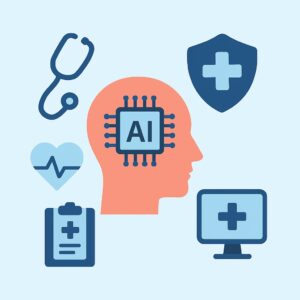
Smarter tools, faster care—AI is changing how we stay healthy. Healthcare isn’t what it used to be. Today, AI applications in real life help doctors and nurses do their jobs better and faster. From spotting diseases early to answering patient questions, AI is making care more accurate and personal.
Faster diagnoses
AI tools can scan X-rays, MRIs, and other images way quicker than humans. They can find tiny signs of problems, like cancer or infections, before doctors even notice them. This means faster treatment and better outcomes for patients. It’s one of the smartest AI applications in real life, making a real difference.
AI chatbots for patient support
Many hospitals now use AI-powered chatbots. These tools help patients book appointments, get answers about symptoms, and even follow up after visits. It saves time and makes health info easier to understand.
Personalized treatment plans
AI also helps create care plans based on a person’s own health data. Instead of one-size-fits-all medicine, doctors can now give treatments that match your exact needs. These AI applications in real life are turning healthcare into something truly personal.
So, the next time you visit a clinic or use a health app, remember—AI might be behind it, helping to keep you safe and healthy.
Cool AI applications in real life for educational use
Smart tools are changing how we learn—faster, easier, and more fun. Learning is way more fun and personalized with today’s smart tools. Many AI applications in real life are now helping students study better, understand topics faster, and stay organized. You’ve probably already used a few without realizing it!
AI tutors and homework help
Platforms like Quizlet and Khan Academy now use AI to create custom quizzes and learning paths. These tools check what you know and give you practice based on that. It’s like having a personal tutor 24/7. These kinds of AI applications in real life are making tough subjects feel a lot easier.
Language learning made simple
Apps like Duolingo use AI to adjust lessons based on your answers. They know when you’re struggling and offer tips or repeat questions to help you get better. This makes learning new languages smoother and more fun.
Smarter study tools
AI tools like Grammarly help polish your writing, while others summarize long articles or explain complex topics in simple words. These AI applications in real life are great for saving time and boosting your confidence in schoolwork.
Whether you’re preparing for a test or trying to stay focused, there’s likely an AI tool out there helping you behind the scenes. Education is no longer one-size-fits-all, and that’s thanks to AI.
AI applications in real life making business smarter
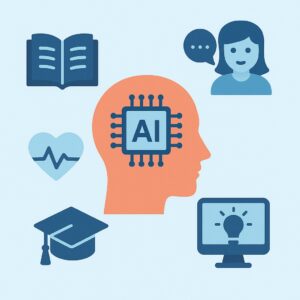
From saving time to boosting profits, smart tools are reshaping work. Businesses today are using AI to get things done faster and better. Many AI applications in real life help companies make smarter decisions, manage tasks, and serve customers quicker. These tools are changing how work gets done across industries.
Smarter customer service
Ever chatted with a company online and got instant replies? That’s AI at work. Chatbots answer questions, solve problems, and help people 24/7. These AI applications in real life save time for businesses and make customers happier.
Faster decision-making
AI tools help companies analyze tons of data in seconds. For example, marketing teams use AI to see what ads work best. Sales teams use it to track customer behavior and plan better strategies. These are real AI applications in real life that help businesses grow faster.
Better workplace tools
AI also powers smart tools like automated emails, task reminders, and project tracking apps. They keep everything organized and help teams work smoothly. These tools don’t just save time—they boost productivity every day.
With AI, businesses no longer rely only on guesswork. They use real data and smart tools to move ahead. It’s clear that AI is not just a trend—it’s now part of how smart businesses work.
Real-world AI projects showing AI applications in real life
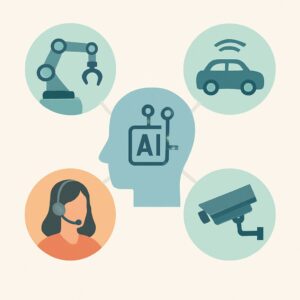
How AI is changing everyday life? AI is no longer just science fiction. You see AI applications in real life all around you. From the apps on your phone to smart devices at home, AI makes things easier and smarter every day.
Healthcare
One cool real-world AI project is in healthcare. AI helps doctors find diseases faster. For example, some AI tools can analyze X-rays and spot problems like fractures or tumors. This speeds up diagnosis and helps patients get treatment sooner. AI applications in real life like these are saving lives by supporting doctors with quick, accurate information.
Transportation
Another exciting example is in transportation. Self-driving cars use AI to understand their surroundings and drive safely. AI applications in real life also appear in traffic management systems that reduce jams by controlling traffic lights based on real-time data. This makes our roads safer and reduces pollution from idling cars.
Daily technology
You might not notice it, but AI applications in real life power many things you use daily. Virtual assistants like Siri or Alexa answer questions and help with tasks using AI. Even social media platforms use AI to show you posts and ads you might like. These projects use AI to make technology more personal and helpful.
AI applications in real life are growing fast. They change how we live, work, and play. Understanding these projects shows how AI is part of your world now and will be even more in the future.
AI tools used by students: real-life applications that help
Making study time smarter and easier. Students today use many AI tools that make learning faster and more fun. These AI applications in real life help with everything from writing essays to organizing notes. They save time and reduce stress, so students can focus on understanding their subjects better.
Writing and research
One popular AI tool helps with writing. It can suggest better words, check grammar, and even help plan essays. AI applications in real life like this guide students to improve their writing skills without feeling overwhelmed. Plus, some AI tools quickly find reliable sources, making research easier and faster.
Organizing and planning
Managing homework and deadlines can be tough. Luckily, AI tools help students stay on track. Some apps use AI to create study schedules based on your workload and free time. These AI applications in real life help students balance school and life without missing important tasks.
Learning and practice
AI also helps with practice and learning new skills. For example, some language apps use AI to understand how well you speak and suggest improvements. Other AI-powered quiz apps adjust questions based on what you already know. These real-life AI applications keep learning fun and personalized.
AI applications in real life have become a big part of how students study and grow. Using these AI tools helps students work smarter, not harder, and prepares them for the future.
AI applications in real life in smart home devices
How AI makes homes smarter and easier? Smart home devices use AI to make everyday life simpler. These AI applications in real life help control lights, temperature, and even security, all from your phone or with your voice. This technology learns your habits and adjusts settings to fit your routine.
Smart speakers and assistants
Smart speakers like Alexa or Google Home use AI to understand what you say. They answer questions, play music, and control other smart devices in your home. AI applications in real life like these make it easy to manage your home without lifting a finger.
AI in smart thermostats and lighting
Smart thermostats use AI to learn when you are home and adjust the temperature automatically. This saves energy and keeps you comfortable. Similarly, smart lighting systems turn lights on or off based on your presence or time of day. These AI applications in real life help reduce bills and make your space cozy.
Home security AI applications in real life
AI also powers smart cameras and alarms. These devices can recognize faces or detect unusual activity. They send alerts to your phone if something seems wrong. AI applications life like this keep your home safer and give you peace of mind.
Smart home devices show how AI applications in real life are becoming part of daily life. They make homes more comfortable, efficient, and secure for everyone.
How do AI applications in real life improve transportation?
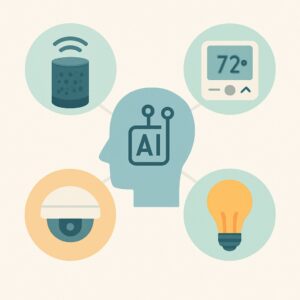
Smarter and safer travel. AI applications in real life are changing how we travel every day. They help make transportation safer, faster, and more efficient. From self-driving cars to smart traffic lights, AI is behind many improvements you might not even notice.
Self-driving cars
Self-driving cars use AI to “see” the road, avoid obstacles, and follow traffic rules. These AI applications life can reduce accidents caused by human errors. Many companies are testing these cars now, and they could become common shortly.
AI in traffic management
Cities use AI to control traffic lights and reduce jams. AI applications in real life analyze traffic flow and adjust signals to keep cars moving smoothly. This helps save time and cuts down on pollution from cars stuck in traffic.
Public transport
Public buses and trains use AI for route planning and scheduling. AI applications in real life help these systems run on time and avoid overcrowding. This makes commuting easier and more comfortable for everyone.
AI applications in real life are making transportation smarter and safer. They help us get where we need to go more easily every day.
AI applications in real life are shaping modern shopping
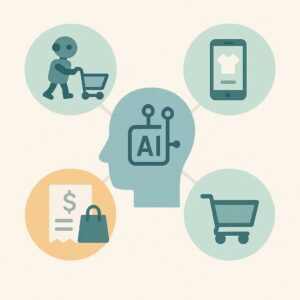
How AI makes shopping easier and smarter. AI applications life are changing how we shop every day. From online stores to physical shops, AI helps create better experiences for customers. It learns what you like and helps find the best deals or products faster.
Personalized recommendations
Online stores use AI to suggest products based on your past searches and purchases. These AI in real life analyze your behavior to show items you might really want. This saves time and helps you discover new things without endless searching.
AI in smart checkout and inventory AI applications in real life
Many stores use AI to speed up checkout with automatic scanning or even cashier-free systems. AI in real life also help manage stock by predicting what items will sell fast. This means shelves stay stocked with what customers want, avoiding empty spots.
Virtual try-ons and customer service
Some shops use AI to create virtual try-ons for clothes or makeup. This lets you see how things look without trying them physically. AI applications in real life also power chatbots that answer questions quickly, helping customers anytime.
AI applications in real life are making shopping more fun and efficient. They help you shop smarter and save time, whether you’re online or in a store.
How do AI applications in real life power customer service?
Making help faster and smarter. AI in real life are changing how companies support their customers. They help answer questions quickly and solve problems without making you wait. This makes customer service faster and easier for everyone.
AI-powered chatbots and virtual assistants
Many websites use AI chatbots to chat with customers anytime. These AI applications life can understand your questions and give instant answers. They handle simple tasks like tracking orders or resetting passwords, saving time for both customers and companies.
AI in personalized support AI applications in real life
AI also helps provide support based on your needs. It can remember your past issues and suggest solutions faster. These AI in real life help customer service reps focus on tougher problems, improving your experience.
Feedback and improvements
AI tools analyze customer feedback from emails, reviews, and calls. Applications in real life use this info to spot common problems and improve services. This means companies can fix issues faster and keep customers happier.
AI applications life make customer service smarter and more helpful. They reduce wait times and offer better support, so you get the help you need when you need it.
FAQs: AI applications in real life
What are some common AI applications in real life?
AI in real life include smart assistants like Siri, self-driving cars, and recommendation systems on Netflix or YouTube. These tools help people with daily tasks, making life easier and more efficient. AI applications in real life also appear in healthcare, helping doctors with faster diagnoses.
How does AI improve daily life for students?
Students use AI applications in real life to study smarter. AI helps with writing essays, organizing schedules, and even learning new languages. These tools save time and make learning more fun and interactive for students of all ages.
Can AI applications in real life be found in homes?
Yes! Many homes have AI applications in real life like smart thermostats, voice-controlled speakers, and security cameras. These devices learn your habits and adjust settings automatically, making your home more comfortable and safe.
How do AI applications in real life impact transportation?
AI helps make transportation safer and faster. Self-driving cars use AI to navigate roads, and AI controls traffic lights to reduce jams. These AI applications in real life improve how people travel every day.
Are AI applications in real life safe to use?
Most AI applications in real life follow strict safety rules. They protect your data and privacy while working to make tasks easier. It’s important to use trusted apps and devices to stay safe while enjoying AI benefits.
Will AI applications in real life change jobs in the future?
AI applications in real life will change many jobs by automating repetitive tasks. This lets people focus on creative and important work. Learning about AI now helps students prepare for the future workplace.
Conclusion
AI in real life are changing how we live, learn, and work. From school tools to smart homes, AI is all around us. It’s helping make things easier, faster, and more fun. You see AI in apps, shopping, and even how we travel. These smart tools keep growing and improving every day. That’s why it’s good to understand how they work.
AI applications in real life aren’t just for tech experts. Students like you use them all the time—often without even knowing it. They help with schoolwork, daily tasks, and even entertainment. As AI keeps evolving, so will the world around you. Stay curious and open to how AI applications in real life will shape your future.

